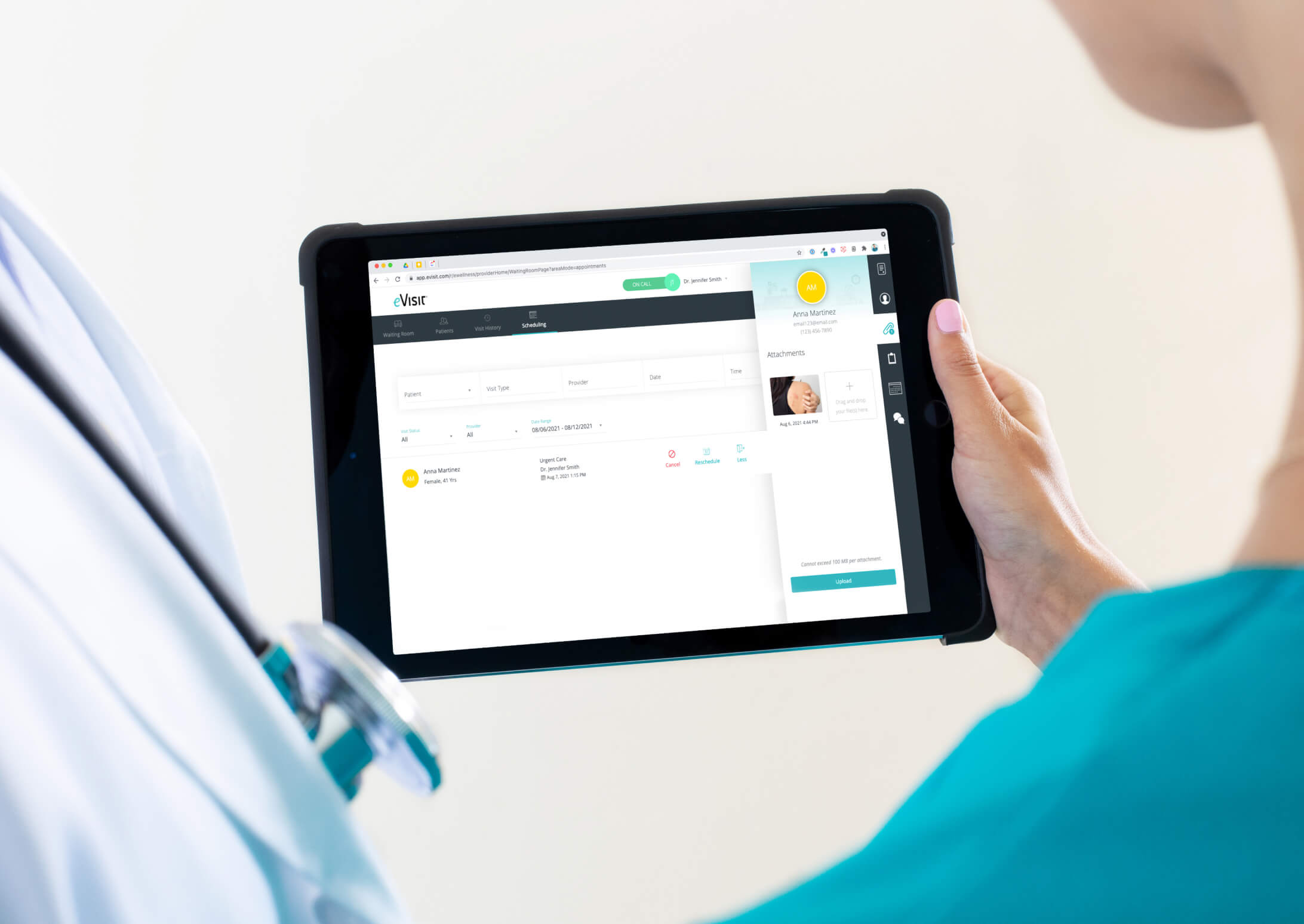Telemedicine Platform
What exactly does a telemedicine platform look like?
Most telemedicine platforms are secure telehealth software systems that are either installed on a medical practice’s computers and live on their servers, or are cloud-based solutions that live entirely online. Others might simply involve a mobile app that allows physicians to practice telemedicine via smartphone. In cases where physicians are going to remote areas of the world to provide care, a telemedicine platform might look more like a mobile device with an integrated screen that allows the physician to record medical data, document the patient encounter, and then transmit the information to a remote health facility or specialist.
Telehealth platform is a catch-all term for all these different solutions, whether it means a mobile app, a software that needs to be locally installed on the computer, or a system that can only be accessed from a telehealth providers’ mobile medical device. Usually, telehealth platforms have a variety of features and enable physicians to practice telehealth in a few different ways. For example, a platform might allow a physician to connect with a patient via secure, high-resolution video for a remote visit, share medical images, send text messages or online chats in real-time, and submit prescriptions to the patient’s pharmacy.
The features that different telemedicine platforms offer range widely. Here is a quick review of some of the popular features:
-
Real-time Video Conferencing
Telemedicine software platforms that fall into the “real-time” category of telehealth allow physicians to connect with their patients or other providers through secure, 2-way video. Real-time video is the best substitute for an in-person visit, since it allows the provider and patient to interact face-to-face and provides more visual data than a consult over the phone.
-
Chat Function
Many telehealth management platforms have a chat function that lets providers talk to patients or other physicians in real-time.
-
Store-and-forward Technology
Telemedicine platforms of the “store-and-forward” variety let patients and physicians share medical data, images, and patient histories in a secure way. Store-and-forward platforms are especially popular in the field of teleradiology, where patient x-rays, MRI scans, and more are sent to a specialist for remote diagnosis. These platforms often require a robust archiving and compressing functions since they’re dealing with detailed medical images that need to be shared with others without any drop in resolution.
-
ePrescribe
More telemedicine platforms are building in an ePrescribe feature, so that healthcare providers can submit prescriptions electronically to pharmacies. No more sitting on the phone with a pharmacy, or needing to clarify a script when the pharmacy can’t decipher a provider’s handwriting.
-
EMR Integration
With the recent push for electronic health records, it’s more important than ever for all patient encounters to be documented and stored digitally. The same goes for telemedicine. Many telemedicine platforms allow users to document a patient encounter, record audio or visual notes, and then attach it to the patient’s health record. Some will generate an exportable record that can be easily imported into an EMR system and added to a patient’s file. Still others are built to directly integrate with EMRs, so that patient histories are readily available and recordkeeping among both in-person and remote visits is seamless.
-
Integrated Billing
Real-time telehealth platforms may include a billing system. This lets providers charge and collect payment from patients for a remote visit and even file a claim — all within the telehealth system.
-
Medical device integration
Some telemedicine platforms are built to connect and communicate directly with mobile medical devices. This is especially common among remote patient monitoring platforms that track patient medical data and then share it with a provider remotely.
-
Reporting and Analytics
Many telehealth platforms include some type of reporting or analytics feature, though what data is included depends on the platform and what it’s being used for. For example, a real-time telemedicine platform might include a reporting feature that tracks how many remote visits a provider has done, how many different patients she or he has seen, the most common reason for the visit, how satisfied patients were with their visits, etc.
Telemedicine platform architecture will continue to change and adapt to new movements in healthcare and new technology. With patient demand for remote health options growing, it’s likely we’ll see an incredible increase in the range of telemedicine platform options out there.
About eVisit
eVisit is a physician-first telemedicine platform that seeks to simplify healthcare. eVisit allows providers to consult their patients remotely through secure, 2-way HD video. With an intuitive interface and integrated ePrescribe and billing features, the eVisit telemedicine platform makes it simple to provide convenient, high-quality remote care to patients. All you need to get started is a computer or compatible mobile device, a microphone, and a camera.
An affordable telemedicine solution for small-to-medium practices, and scalable for larger health systems. To learn more about the eVisit’s telemedicine platform, visit our How it Works page.



